Will the barroasis of the beehives disappear?
Expansion of the baroque
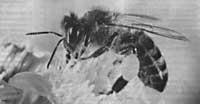
In 1904 the American entomologist Edward Jacobson described for the first time on Java Island the piojo varroa jacobsoni bearing his name. This parasite lived then in the bees apis ceranas of Asia, maintaining the balance between the hosteleros and the parasites. This type of bees has a system of baroque self-destruction. The bee, individually or with the help of its companions, destroys the barros without endangering the survival of the hive.
However, the type of apis mellifica of our territory lacks systems of self-service and lice. Therefore, when they are affected by the plagues of mites, they are without defense. If for two or three years the beekeeper does not perform treatment, the beehive will deteriorate.
The Baroque invasion began around 1960. Bees of the apis mellifer breed seem to spread in some Asian territory after stealing honey to bees of the Apis cerana breed. Since then it has spread rapidly to many other parts of the world. In 1971, thousands of beehives were destroyed in the Soviet Union and China. Then it passed Eastern Europe, in 1977 it arrived in Germany, in 1982 to France, in 1985 to Catalonia and in 1987 already existed in the south of Euskal Herria.
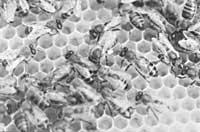
Today, with the exception of Great Britain, all of Europe is contaminated by mud and the first signs have appeared in the north of Africa and South America. Twenty states in the United States have also suffered from this disease.
Characteristics of the Plague
The mud is a piojo of 1,5 mm of diameter. The lice are male and female. Males are white and very small, so they are barely visible to the naked eye. The female is reddish.
The mud is the female, the most dangerous, since through its two strong oral appendices it pierces the cuticle inside to absorb the hemolinfa or the blood of the bee. This small mite only leaves once its host bee, when it has to reproduce. The mud, to reproduce the females, leaves the host bee and goes to the room where the eggs of the male bees or the erlamangos are found. In the inert where the bee egg is found, the bee larva becomes nymph when the worker bees operate the inert, the mud lays 5-7 eggs. Only one of them will be born the male baroque. This male, his newborn sister, dies soon. Young females then live on the back of the new male bee or bee.
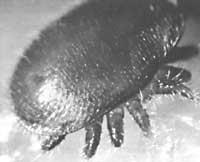
When the entrance door to the Erlamandoa is opened, the females leave outside with their guest. But the newborn is not normal. Sometimes lack wings, others have deformed body, etc. The bees of the beehive, therefore, carry the hermon, sick or dead, to the outside, when the female and her offspring extend to the bees of the workers.
Each mud female can complete the cycle described several times throughout her life, and as it is easy to calculate, if she does not resist the disease, the epidemic destroys the hive quickly.
Resistant bees resistant bees
Because the transfer of beehives causes terrible damage all over the world, researchers look for bees resistant to baroque. Genetic selection is a way for it, but it is almost impossible to find this type of little sick bees in hives. However, it is possible to observe the influence of time in the baroque in which the pile is operated. The queen bee performs 18 days before being born in the cabin, the 21 worker bee and the Erlamandanos 24. The longer they remain operated or closed, the more boats leave.
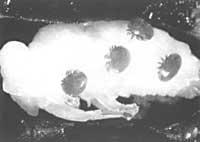
The permanence time of the closed battery is genetically limited. In the selection, therefore, it would be necessary to choose bees with little time of operation.
Another way to fight the baroque is the study of temperature. The working bees keep in the beehive the part of the eggs at constant temperature. Most of the baroque occurs when this temperature is 32,5°C, which is the case of European beehives. However, if the temperature is higher, the mud has poor reproduction conditions and can not survive more than 37ºC. The bee of the breed Apis cerana, for example, uses this system to combat the baroque.
However, the path of genetic selection is long and its fruits, if given, we will know them within a few years.
Anti-Baroque Treatments
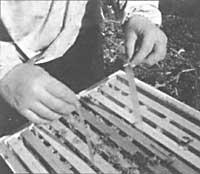
Faced with this epidemic, beekeepers and researchers have not been standing. Many of the treatments are tested and the most important are Elhuyar. In number 11 of Science and Technology (1987 issue), Martxel Aizpurua described the Barroasia article perfectly.
But lately they have launched a new treatment called Apistan. It consists basically of a polyethylene tape with flubalinate. In addition, flubalinate is an active (non-toxic) molecule used in the treatment called Klartan. The polyethylene tapes are left stuck in honeycomb for eight weeks. From the tapes the active substance extends to the entire hive and die as the mugs leave the cells. There are some advantages through this technique. For example, the impact is eight weeks and not a moment like in other systems. But it also has its disadvantages. For example, the price is quite expensive; the beehive and 600 sts annually. environment. In addition, it is possible that, over time, waterholes resistant to fluvalinate will appear and the effect of this treatment will be cancelled.
Odour trap
A complete system of struggle against the baroque could be an odour trap. A group of researchers from the INRA (Institut national de recherchers agronomiques) and the CNRS (Centre national de la recherche scientifique) is implementing a new procedure. To do this, they analyze what the mud does to reproduce. The mud female leaves the bee and goes to the area of bee larvae inside the hive.

The nursery of the hive is, say, an aspect in which the females choose the larvae of the erlamangos to reproduce. The mugs are, therefore, able to identify the chemical signals emitted by the larvae and have studied how this identification is performed.
The researchers have prepared the larva extracts of the erlamangos in the hexane (strong organic solvent) and tested them in the oil maker. The smell has been placed in the center of a beehive. The device is waterproof and transparent to be able to see everything from outside. Inside it has a square plate of superior glass, illuminated below. The mud is located in the center of the plate and by the four vertices of the plate are thrown air currents. Two of them smell products obtained from bee larvae and two others have no smell.
After six minutes, the mud approaches from the center of the plate to an area with an interesting smell and is lost trapped in the trap. This essay is frequently performed for each type of smell, always changing the baroque on each occasion. Each of the odors shown is analyzed by chromatography in the gaseous phase with the help of the mass spectrometer.
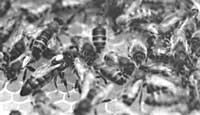
Only three of the ten molecules used in the tests have attracted the baroque. The researchers therefore know what these molecules are and have registered a patent. Now we are looking for an adequate support that allows the baroque to attract to the trap those smells on a regular basis and over time. At laboratory level, very good results have been obtained, but we will have to see how they are obtained outdoors and in common clay beehives.





